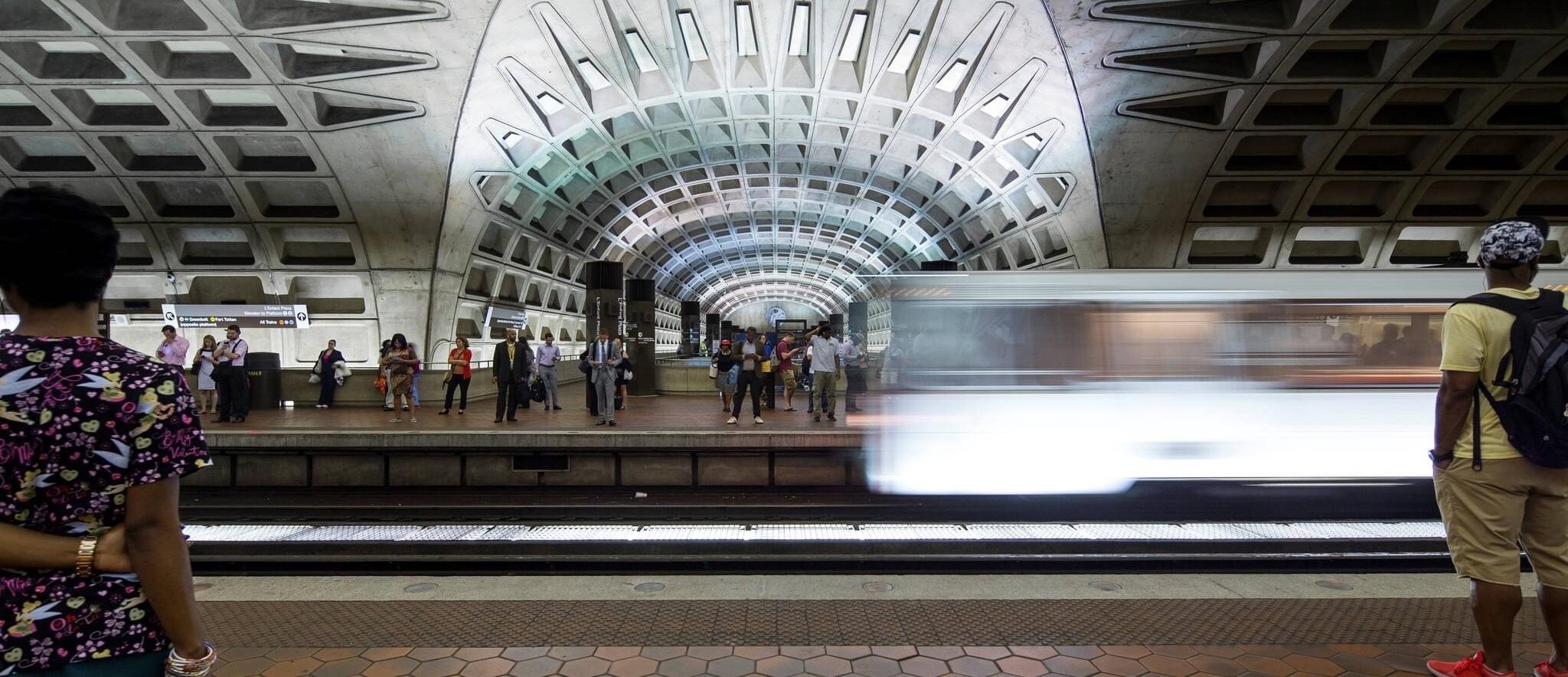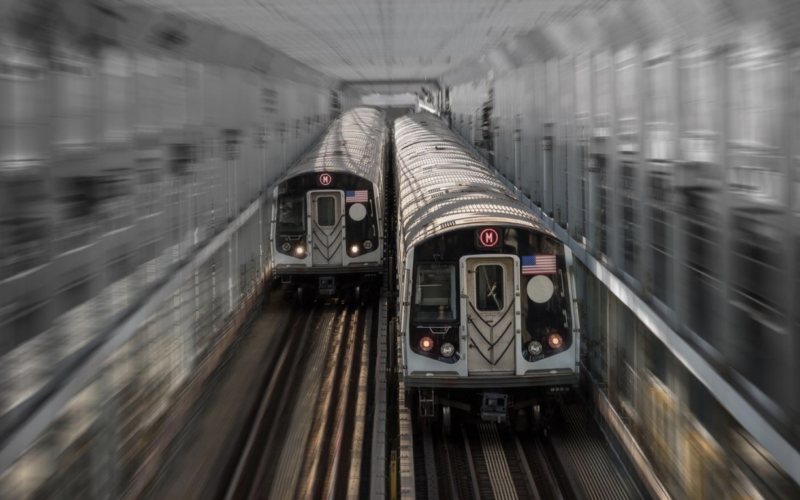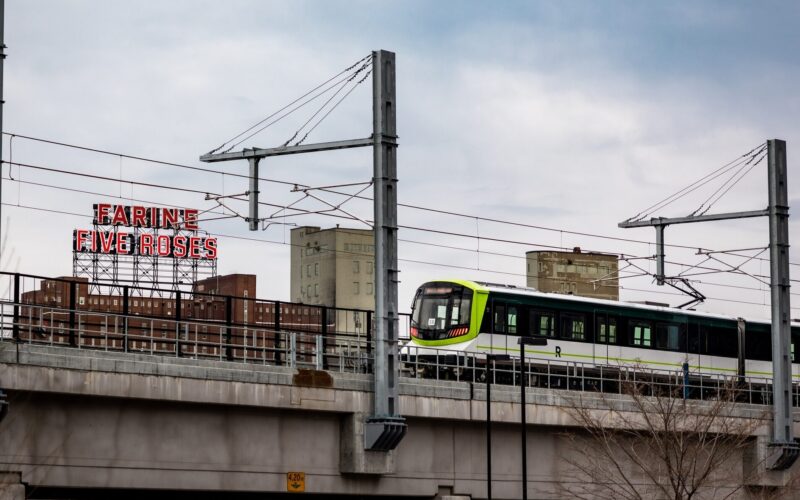
Photo credit: WMATA
The experience of being a WMATA rider has substantially improved over the last 18 months, thanks to changes the agency has made like adding off-peak service and simplifying fares. Things are about to get even better with the launch of all-door boarding later this fall, overnight bus service on some lines starting in December, and an ambitious plan to redesign the Metrobus network. But all of this could go away by July 1, 2024.
Someone once said, “We can have nice things” and then the person next to them leaned over and whispered, “But nice things require money.” In June of this year, WMATA sounded the alarm that it, like many large transit agencies, is heading towards a fiscal cliff. As federal COVID-relief funding comes to an end, WMATA’s fare revenue has stabilized below pre-pandemic levels, and inflation is increasing expenses, leaving the agency facing an operating budget deficit that will become increasingly untenable. This week, WMATA leaders released an outline of doomsday funding scenarios, which include severe service cuts that could eliminate bus routes, reduce rail hours, create longer waits between trains, and close down stations.
WMATA is an essential part of the DC region’s economy, and service cuts of this magnitude would be devastating for the mobility of the region. Moreover, WMATA has been making major strides towards putting riders first. It would be a travesty if it were denied the opportunity to fully realize this vision, and it is incumbent upon Washington DC-area leaders to provide WMATA with the money it needs to survive and thrive.
We’ve highlighted four of the improvements riders are experiencing (or could soon experience) below and that will potentially be erased if the region’s leaders don’t come together to find a solution soon. The biggest proposed change; the bus network redesign, is massive and could dramatically improve transit access for Black and brown riders in the D.C. metropolitan region. However, this ambitious redesign will only happen if regional leaders come up with a plan to provide the agency with additional funding.
Beginning in May of 2022, WMATA has had 10 service improvements across the network. Two of the most equitable and accessible changes for WMATA’s ridership are:
- Expanding off-peak service will exceed pre-pandemic levels by four percent. Customers will see improvements on 68 routes, including expanding the reach of Metro’s Frequent Service Network to more customers and routes in D.C., Maryland, and Virginia.
- Increasing frequency of service on the Orange, Blue, and Silver lines for Metrorail. The Orange line will operate every 10 minutes from open – 9:30pm, and every 15 minutes after 9:30pm 7 days per week, and improvement on the current 12-minute frequency during peak and 15-minute frequencies during off-peak on weekdays. The Blue and Silver lines will operate every 12 minutes from open – 9:30pm, and every 15 minutes after 9:30pm 7 days per week; an improvement on the current 15-minute weekday frequencies during off-peak hours.
With each compounding change, WMATA is running more trains now than at any other time in the agency’s 47-year history. Metro will have 58 percent more trains in service on weekdays compared to July 2022 and provide 73 percent more train trips.
WMATA simplified fares in June 2023, by changing the price of fares and how they are calculated. Metrorail rides will have one distance-based fare on weekdays before 9:30 p.m., eliminating peak fares during morning and evening rush periods. After 9:30 p.m. and on weekends, customers will still pay a $2 flat fare per trip. Regular Metrobus fares will remain $2 per trip, and on MetroAccess, the maximum fare will be reduced to $4 per trip. WMATA also added a discount program for SNAP recipients.
This fall, Metro will begin to allow passengers to enter from both doors to speed up the boarding process with the goal of decreasing wait times and delays, and getting riders to their destinations faster. It will begin on 450 buses, approximately one-third of WMATA’s bus fleet, to improve the rider experience. Boarding and exiting the bus become easier as fareboxes are being replaced with SmarTrip taps at the front and back doors that operate with a SmarTrip care or mobile fare-equipped cell phone. Other cities with all-door boarding have seen trip times improve by up to 30%. This is all part of Metro’s Better Bus Initiative, aimed at enhancing service with more dedicated bus lanes, new bus facilities, zero-emission buses, and customer-focused improvements.
The network redesign is the first comprehensive proposed redesign of the entire Metrobus network since it was created in 1973, and began as part of the 2020 Bus Transformation Project, and is scheduled to be implemented in 2024. The redesign is putting customers first demonstrated through four goals:
- Keep up with the changing region and the people who live and work there
The metropolitan region adds 3,000 people and 2,200 jobs per month, and they need and deserve a transit system that can keep up with that growth and provide essential point-to-point connectivity.
- Better connect people to where they need to go
Currently, 50% of the people living in the D.C. region lack access to transit services. Many people opted for private car ownership and have not returned to transit, creating more congestion on the region’s already crowded streets. WMATA buses have also been stuck in traffic and part of the program is to coordinate bus lanes and implement transit signal priority to move transit riders through traffic faster.
- Promote equity, inclusion, and access to opportunities
Reviewing WMATA’s customer profile, the agency found that 50% of customers are low-income, and 84% are people of color. The redesign needs to be equitable and prioritize the needs of essential workers who need to get to their destination quickly, reliably, and safely.
- Make an easy-to-use network
WMATA’s current transit system is confusing for riders. Metro has 200 bus routes, in addition to 7 other providers who operate another 250 routes within the region. The system is difficult to understand and navigate and becomes more challenging for riders with accessibility issues.
What’s on the Line?
As of September, WMATA’s budget gap totals $750 million. If the agency isn’t able to close the gap by next summer, it will lose all of the progress that’s been made and will have to start initiating hiring freezes and layoffs that would dramatically reduce systemwide operating hours and cause increased wait times for passengers.
Currently, WMATA is considering every possible option, all of which will require funding from DC, Maryland, Virginia, and the Federal government. Without regional support from elected officials, as well as the business, civic, and community leaders, service would have to be reduced by two-thirds, triggering a death spiral for the agency. There are several proposed solutions, all of which would help, but none of which bring the agency back into the black. Without swift action, the cuts will go into effect July 1, 2024.
 Surmounting the Fiscal Cliff: Identifying Stable Funding Solutions for Public Transportation Systems
Surmounting the Fiscal Cliff: Identifying Stable Funding Solutions for Public Transportation Systems
Urban Institute's latest report, "Surmounting the Fiscal Cliff," seeks to understand why transit agencies—unlike many other public services—continuously face fiscal instability.
Read More On Track for Success: Decoding Montreal’s REM Model for Efficient Transit Projects in the U.S
On Track for Success: Decoding Montreal’s REM Model for Efficient Transit Projects in the U.S
Why is it so difficult to build subway and light rail projects in America? Every week there’s a new story about an American transit project that is behind schedule, over budget, or “paused”. Montreal’s Réseau express métropolitain (REM) stands out as a recent North American project that has begun to address some of the challenges that have foiled so many others. What is REM getting right that other projects aren’t?
Read More